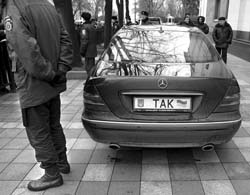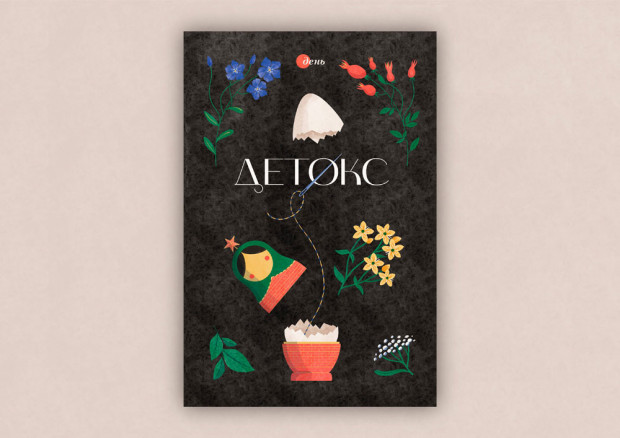Information Breakthrough
Orange revolution brings Ukraine a step closer to an information society
The crisis is over, to use the medical parlance. Slowly but surely, life is returning to normal. As Independence Square has emptied, the television receiver is no longer the focus of family life. Not surprisingly, during the past few tumultuous weeks most Ukrainians stayed glued to television screens round the clock for the latest news reports. Now newspaper vendors are reporting declining sales, while the merits of Yushchenko as opposed to Yanukovych are no longer the hot topic on public transport.
In effect, all of the above symptoms were the key manifestations of the crisis. In time of great hardship, information becomes the most demanded item on the market. Without a doubt, psychologist, political scientists, and sociologists will devote much ink to what happened between November 21 and December 9. It is obvious today that the orange revolution has brought forth new forms of communication, ushered in a revival of the electronic mass media, and brought Ukraine a step closer to an information society.
Experts say that orange ribbons have become the hit of 2004. To quote Denys Bohush, general director of Interactive PR Group, little by little they have turned from the campaign color of one of the presidential contenders into a nonverbal form of communication. According to Bohush, orange ribbons were more a symbol of unification and common struggle than a symbol of support for one’s candidate of choice. It must be admitted, however, that the popularity of the orange ribbon is in large part due to its color. Psychologists describe orange as an extremely energetic and action-provoking color.
People who gathered to stand up for their rights till the very end needed information as air itself. According to experts, regular news reports from the stage, broadcasts of a television channel most trusted by the protesters, and the news bulletin circulated by the students of the Journalism Institute had stemmed the spread of rumors, which is phenomenal given the audience of 200,000. Meanwhile, rumors could have caused the gravest of consequences. First, rumors help sow discord among the rally participants. Second, they can trigger aggression that the speakers onstage tried so painstakingly to contain. According to Heorhy Pocheptsov, Ph.D. in philology and chairman of the Information Policy Faculty at the National Academy of State Administration under the President of Ukraine, the continuously chanted slogans and the way the rally was orchestrated served to unite those who flocked to Independence Square.
The leaders faced the problem of deterring the rally from aggressive action, while simultaneously trying to overcome the depression that set in primarily because of the lack of aggressive action. According to Pocheptsov, it is unethical to keep people at such a high peak of activity and suggestibility for such long periods. In such a state people tend to see things in either extremely dark or bright colors. Yet there is a different opinion. According to Oleksandr Yarema, first deputy chairman of the Ukrainian National Committee of Youth Organizations, the events of the orange revolution are proof that the laws of mass behavior do not always hold. “A huge number of people came to Independence Square absolutely consciously to defend their vote and freedom. Many showed initiative in trying to determine what they could personally do in a specific setting. Notably, they did all of this from their heart and not owing to some PR technologies,” Yarema says.
In any case, much has changed in Ukrainian society. According to Denys Bohush, while formerly the average Ukrainian spent three and a half hours daily thinking about politics (versus the three and a half minutes spent by the average American), now his political ruminations take up to four hours. Not surprisingly, the specifics of Ukrainian legislation have become more accessible and understandable to Ukrainians both in the urban and rural setting. Things have also changed in terms of satiation of informational hunger. Mr. Bohush believes that broadcasts from Independence Square during prime time have helped television channels to regain public trust that was undermined during the smear campaign ahead of the elections. “All of this means one thing: the public is currently experiencing a critical need to sound off. What is most important now is not stopping the public but instead assisting it in doing so,” believes Pocheptsov.






